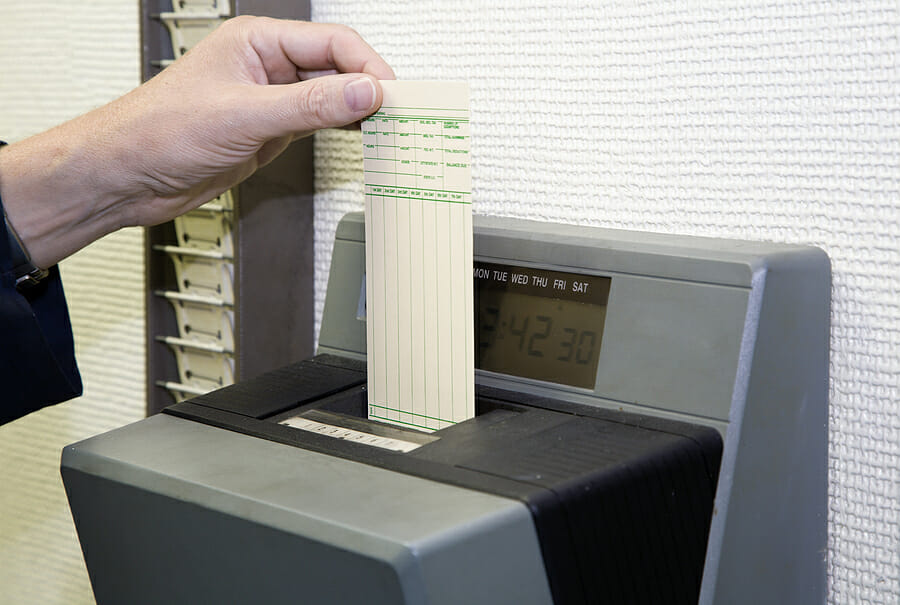The technological era has enabled businesses to evolve and flourish with the latest gadgets and techniques. However, the construction industry is often reluctant to implement automation and technological development at their sites.
Most of the jobs in the construction industry are still performed the same way as fifteen years ago. Paper Time Cards are one of these outdated technologies that construction firms have been using to manage routine tasks. It has been a tradition to use paper time cards for decades. While paper cards were a decent option once, technology such as mobile tracking is a much better and more practical option for businesses.
However, this site offers a simple solution to track labor hours with a direct feed into the business’s payroll.
Why is it time to switch paper time cards?
This article will find the 8 best reasons to ditch paper time cards in the construction industry. So, let’s get in without further ado.
1. Manual entry errors
The effectiveness of paper time cards heavily relies on the memory and integrity of the workers. Even a 5-minute addition off the clock can lead the construction firm to lose plenty of money by the end of the month. Hard-to-read scribbles, inattentiveness, or eye fatigues are other factors that lead to errors in manual entry.
Such mistakes can lead to inaccurate costing, which affects the overall budget flow. Manual entry in paper timesheets also requires money and time to train employees. However, an automated system can streamline all the information in a single checkpoint and avoid inconvenience.
2. Reduces productivity
Like other firms, construction sites also want to boost productivity. One of the cases they can do that is by cutting off the paper time cards. Employees make countless to and fro trips from the construction site to the office and back to the site to pick up and drop off the timesheets. This is where paper timesheets reduce productivity since the time could have been invested elsewhere.

Other than that, paper time cards are a slower and more complex way to track workers’ timing than electronic timesheets, which causes a loss in productivity. Without an automated system in place, it is difficult for construction sites to increase productivity and focus on tasks that matter.
3. Employee time theft
Rounding up a time of a few minutes may not seem like a big deal to workers. But according to the American Payroll Association, each employee steals around 10 minutes approximately per day. Due to this, the construction business occurs 7% of its payroll errors. Most workers round up their paper time cards to the nearest value instead of the accurate time.
For instance, workers will note down 8:00 am even if they started working late at 8:10 am and would round up their off-time to 4:00 pm despite leaving at 3:50 pm. Apparently, these 10 minutes seem harmless. But at the end of the month, these additional 10-20 minutes every day will be in employees’ favor and cause significant losses to a company.
4. Inaccurate billing
Construction firms require their workers to submit a complete paper time card bi-weekly or bi-monthly or submit a time card app. Workers often forget to mark their timings of the day. As a result, they struggle to remember their timing and the days they left early or are overworked. All of this leads to inaccurate billing.
The few minutes or hours adjusted here and there can result in increased wages for the employees. With inaccurate billing, construction firms can risk losing their employees’ trust. But with the help of automated time tracking, the employer can know precisely how much time a worker spent working.
5. Misplacing or damaging issue
Paper documents usually go missing, sometimes under a pile of papers, or end up stained with tea, crumpled, creased, and so on. The damaged or misplaced paper time cards lead to late and wrong payments.
The entire business system can end up stressing out while solving these issues. As a result, it consumes the time that staff could probably spend on some more valuable activity.
6. Limited data
Paper time cards offer very little data, sometimes even outdated. Construction firms struggle with managing inventory, finding the accurate cost paying to the workers, and maintaining accurate data to determine the monthly expenses and profit each month.
Since the manual timesheets lack updated data, the business finds it hard to sum up the payments.
Without the precise workers’ and production data, the construction business cannot assess the total cost of completing a project. Eventually, limited and outdated data affect the projected cost, which often results in a loss of revenue.
7. Accessing data at the very last minute
As mentioned earlier, construction businesses set the deadlines to submit the paper time cards by the end of every week and month. Since the sheets are with workers all the time, managers can’t access and double-check them to find any inaccuracy in the data immediately. As a result, it becomes a problem whether to confirm the errors or pay the workers on the payment day.
The automated timesheets ensure that all the data is accurate, and even if any error is detected, the sheets would report to the managers in real-time. Therefore, all the problems related to hours and payment can be resolved instantly and won’t be waiting for you at the last minute leading to late payments.
8. Overtime management issues
Overtime is often necessary for construction businesses since they have to meet project deadlines. Manual tracking can hinder the efficiency of calculating overtime data. It may cause the manager to lose the timesheets with a ruckus of files.
With automated time tracking cards, sheets are filled within real-time and would alarm you if any employee exceeds the overtime limit. Comparatively, paper time cards are more challenging to handle the records.
Bottom line
Successful construction businesses always look for better ideas to optimize the firm and boost productivity. The technology has evolved immensely, and construction sites are beginning to ditch paper time cards. Paper timesheets can easily be falsified, leading to payroll clerical errors since the workers manually fill them.
Switching your manual system with an automated time tracking system will offer remarkable advantages for your construction business, including maximized revenue. Collecting paper time cards and entering them into a spreadsheet creates a fertile ground for errors. However, with automation and tracking clocks, you can lower the risk of errors.
Image Source: BigStockPhoto.com (Licensed)
Site Disclaimer
The Content in this post and on this site is for informational and entertainment purposes only. You should not construe any such information or other material as legal, tax, investment, financial, or other advice. Nothing contained on our Site constitutes a solicitation, recommendation, endorsement, or offer by HII or any third party service provider to buy or sell any securities or other financial instruments.
Nothing in this post or on this site constitutes professional and/or financial advice. You alone assume the sole responsibility of evaluating the merits and risks associated with the use of any information or other content in this post or on this site.
You recognize that when making investments, an investor may get back less than the amount invested. Information on past performance, where given, is not necessarily a guide to future performance.
Related Categories: Work, Reviews, Tools







